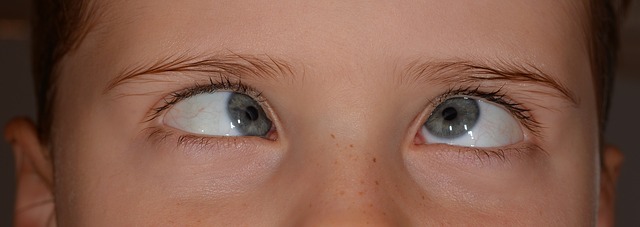- wikiskripta.eu
- wikipedia.org
- nhs.uk - Squint
- medicalnewstoday.com - What's to know about squint, or strabismus?
Squint: What do we know about squinting of one or both eyes? Can it be corrected?

Squint is a movement disorder of the eyes. Their position during movement is different. Fixation of vision on an object takes place with only one eye. This disorder results in visual disturbances. Its early examination and treatment is important.
What forms are we familiar with?
It is a defect in which there is a loss of coordinated eye movement. One eye deviates from the other's direction of vision. The eyes do not fixate at the same point. Squinting needs to be addressed as soon as it is found. One of the reasons for this is that sometimes the condition can be caused by a nervous or even infectious disease.
We know these forms of strabismus:
- convergent
- divergent
- vertical
- fixed
- alternating

Strabismus itself has several forms. The most common is convergent strabismus. A squinting of one eye, which runs inwards, is present. In addition, divergent forms occur, where the eye runs outwards. A vertical form, where the eye deviates vertically upwards or downwards, may also occur.
Sometimes the squint always affects the same eye, in which case it is called fixed strabismus. However, there may also be alternating strabismus, in which the squint affects both eyes alternately.
If strabismus is not corrected and treated, the condition can worsen and, for example, lead to amblyopia, or dullness. In this case, visual stimuli from the eye are inhibited and ignored by the central nervous system. The child thus stops seeing in the eye affected by the strabismus.
A decrease in general visual acuity is also common, with eccentric retinal fixation occurring. This is why this symptom should not be underestimated and should be treated.
Most often, this problem is associated with squint, which is an eye disease in which binocular vision is impaired. Double vision occurs in the affected person.
Both eyes in this disease do not point simultaneously in the same direction towards the object on which the person wants to focus. The cause may be a disorder of direct mobility of the eye muscles or a disorder of coordination of the eyes in the brain. The treatment is conservative form or surgical.
Other causes of squint
Affection of this type does not occur only in eye defects. Often it is one of the symptoms of diabetic neuropathy. If the oculomotor nerves are affected as a result of this disease, squinting occurs in adulthood.
A person cannot control both eyes at the same time. And this is manifested by strabismus, double vision and sometimes even eyelid drooping. Diabetic neuropathy affects both the function and the structure of the nerve.
Sometimes squinting also occurs in some infectious diseases, for example, in congenital toxoplasmosis, where squinting is seen in children. Toxoplasmosis is a parasitic disease caused by the parasite Toxoplasma gondia.

In its asymptomatic and latent form, the disease occurs in up to a third of the population. It is especially common in people with weakened immunity. The disease is especially common in the neonatal period, and sometimes hearing can be affected.
Another cause of squinting is trauma. In head injuries, damage to brain tissue and nerves can occur. The disorder also occurs as a result of bleeding into the cranial cavity and brain, as well as by blood loss in the oculomotor muscle.
Sometimes the cause must also be sought in a tumour. The occurrence and location of the tumour causes oppression but also damage to the nerve or muscle fibres in the area.
Video on the causes of squinting
Diseases with symptom "Squinting"
Interesting resources
Related










